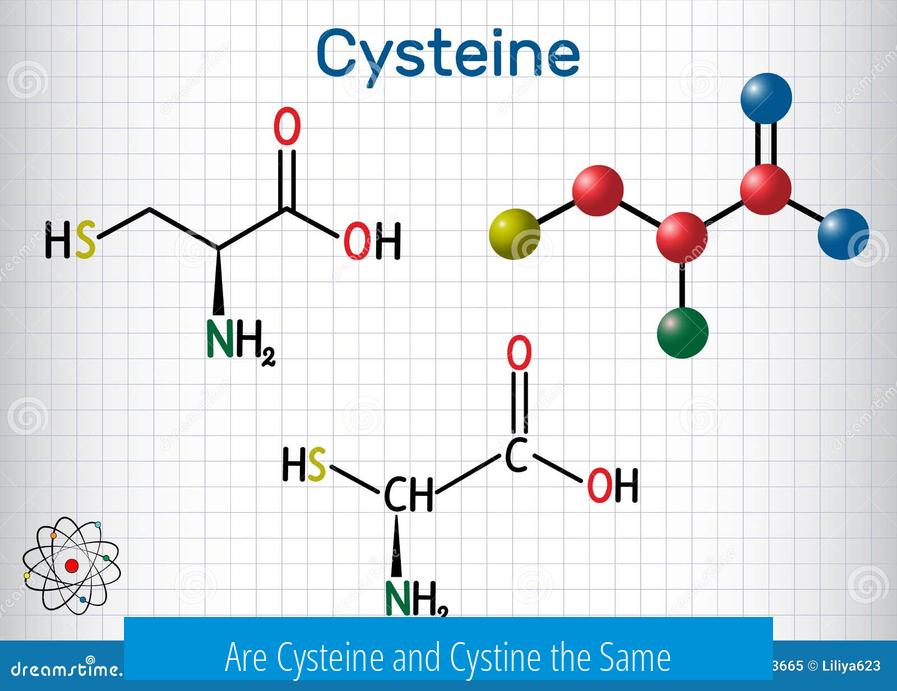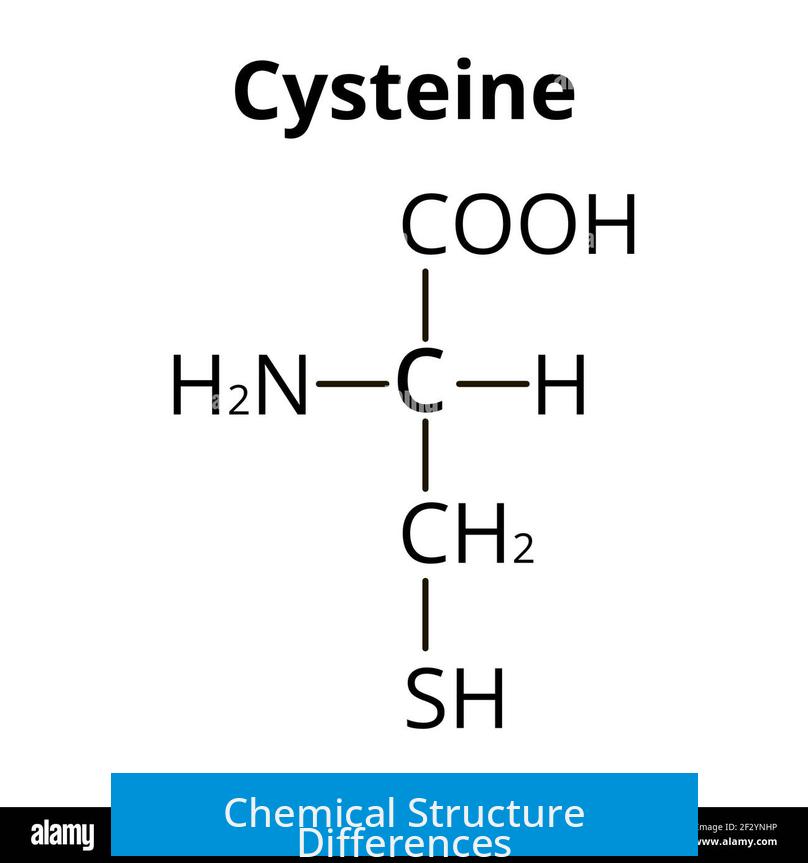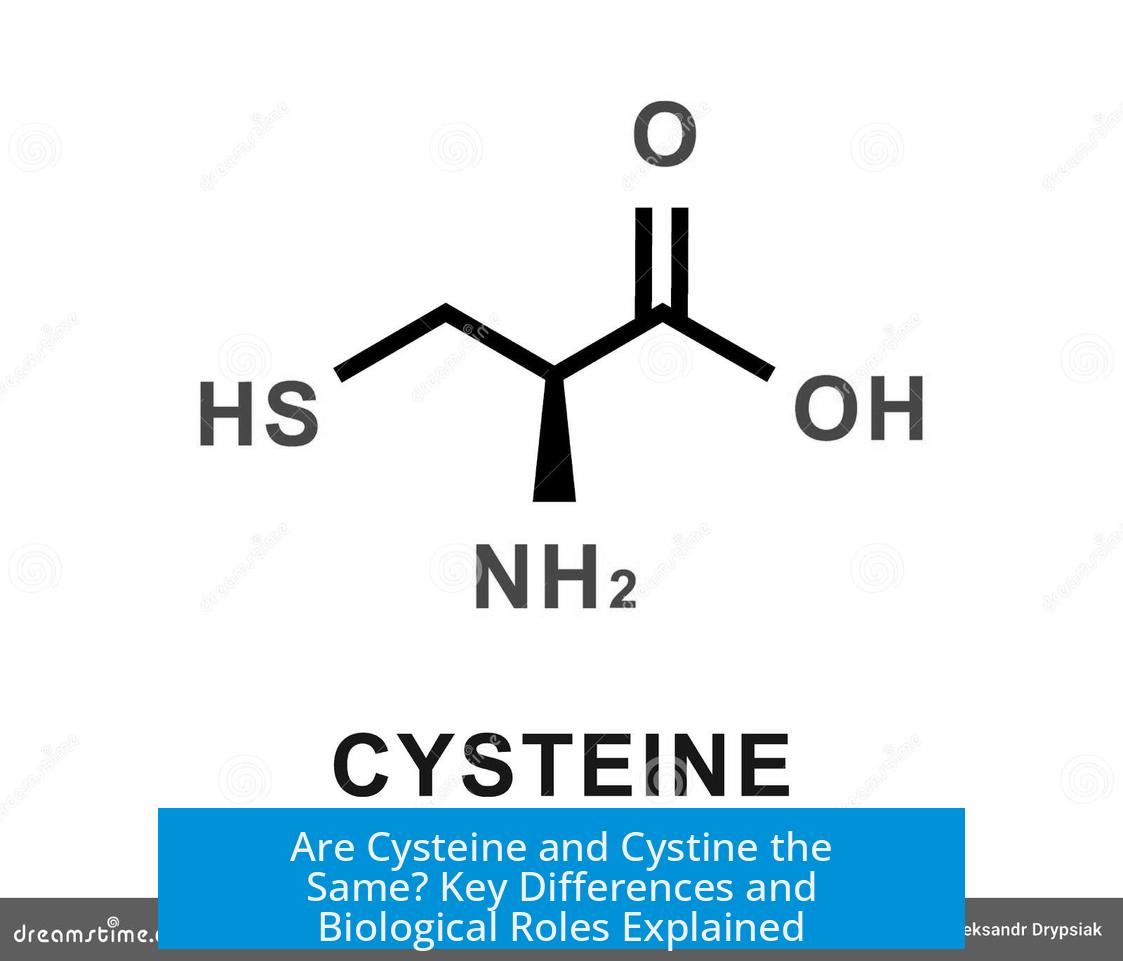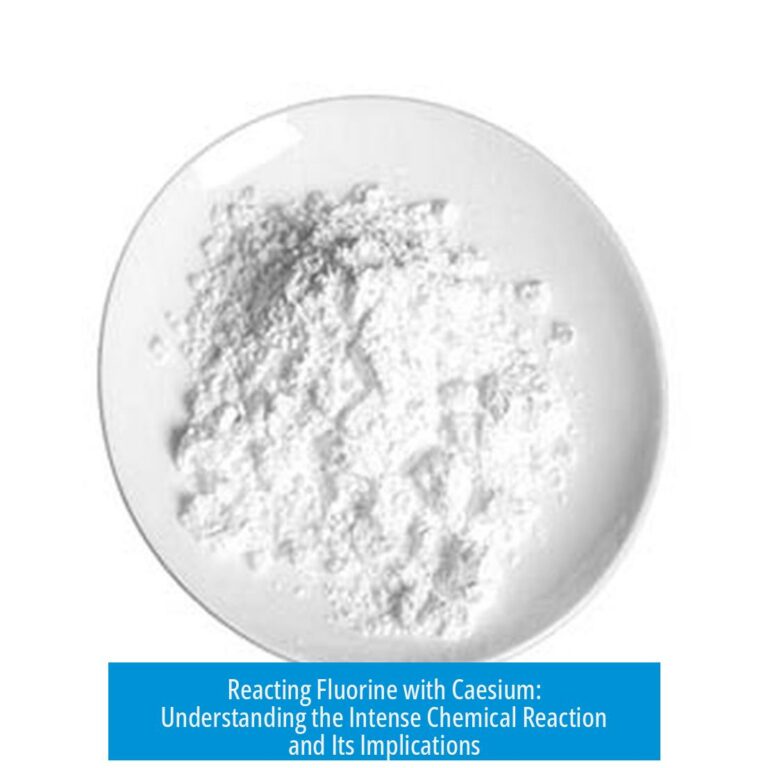Are Cysteine and Cystine the Same?

Cysteine and cystine are not the same chemical compounds, though the body easily converts one into the other, making their dietary roles nearly equivalent.
Chemical Structure Differences

Cysteine is a sulfur-containing amino acid existing as a monomer. It has a free thiol (-SH) group. Cystine, however, forms when two cysteine molecules bond via a disulfide (-S-S-) link, creating a dimer.
These structural differences affect their chemical properties and reactivity. Cysteine’s free thiol makes it more chemically reactive. Cystine’s disulfide bond is less reactive and more stable in certain conditions.
Environmental Influence on Conversion
pH strongly influences their interconversion:
- In acidic solutions, cysteine remains stable and does not form cystine.
- In neutral pH, cysteine readily oxidizes to form cystine.
- The reverse reaction (cystine to cysteine) is less common under these conditions without enzymatic action.
Biological Roles and Enzymatic Use
The body utilizes cystine enzymatically to build peptides and proteins. Meanwhile, cysteine can participate in redox reactions due to its reactive thiol group. This allows cysteine to interact with other sulfur-containing molecules, affecting cellular chemistry.
While chemically distinct, enzymes within the body facilitate rapid conversion between cysteine and cystine, enabling both to contribute to protein structure and function.
Dietary and Physiological Effects
Dietarily, cysteine and cystine behave similarly because the body smoothly interconverts them. Neither form offers a distinct advantage in nutrition alone.
Cysteine has been linked to beneficial health effects such as supporting wound healing and promoting muscle and hair growth. These benefits likely arise from its role in protein synthesis and antioxidant activity.
Summary of Key Points
- Cysteine is a monomeric amino acid with a reactive thiol group; cystine is a dimer connected by a disulfide bond.
- Cysteine is stable in acidic environments; cystine forms in neutral pH by oxidation.
- Enzymes use cystine for protein construction; cysteine is more chemically reactive.
- The body rapidly converts between cysteine and cystine, making their dietary impact similar.
- Cysteine may aid wound healing and support muscle and hair growth.





Leave a Comment